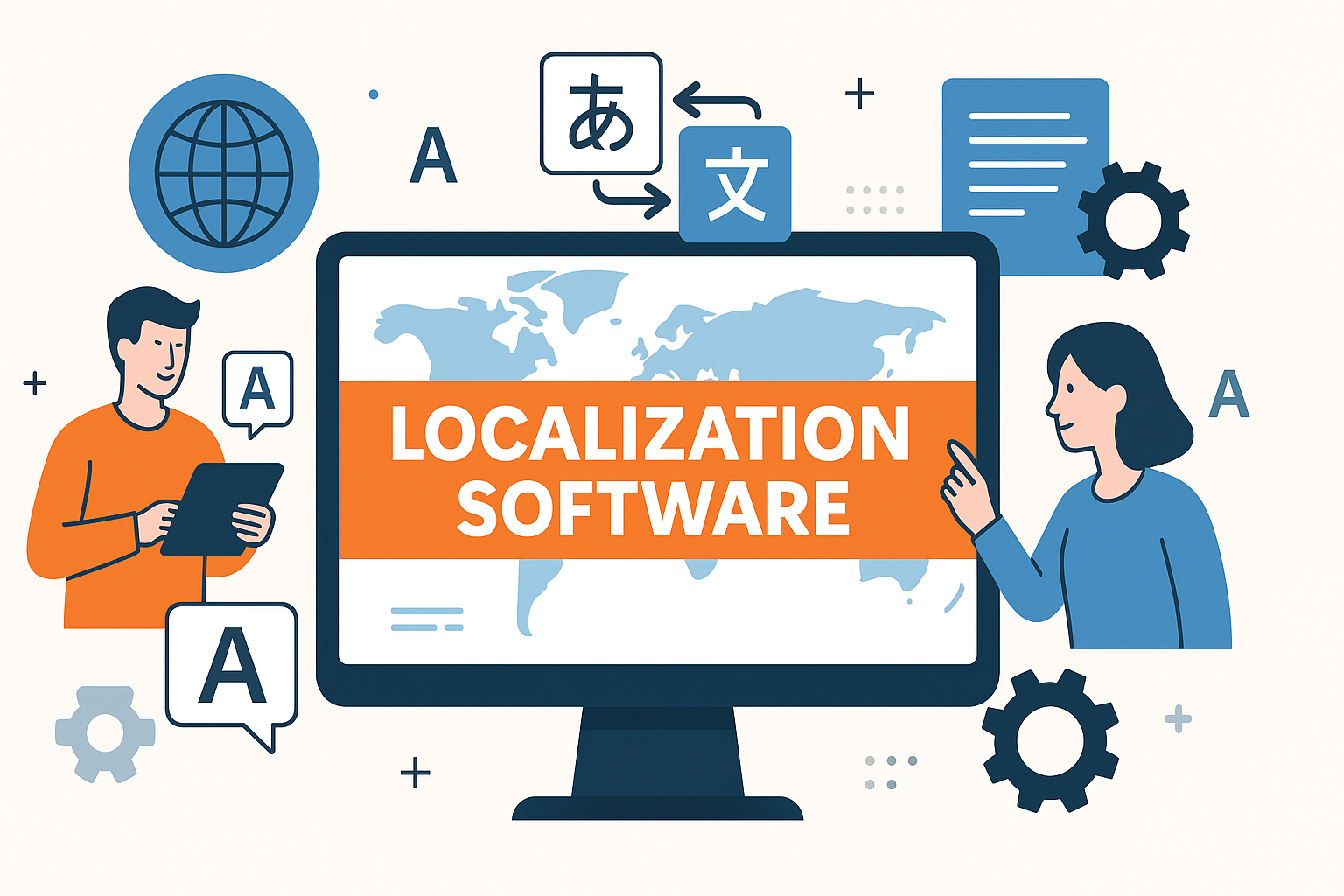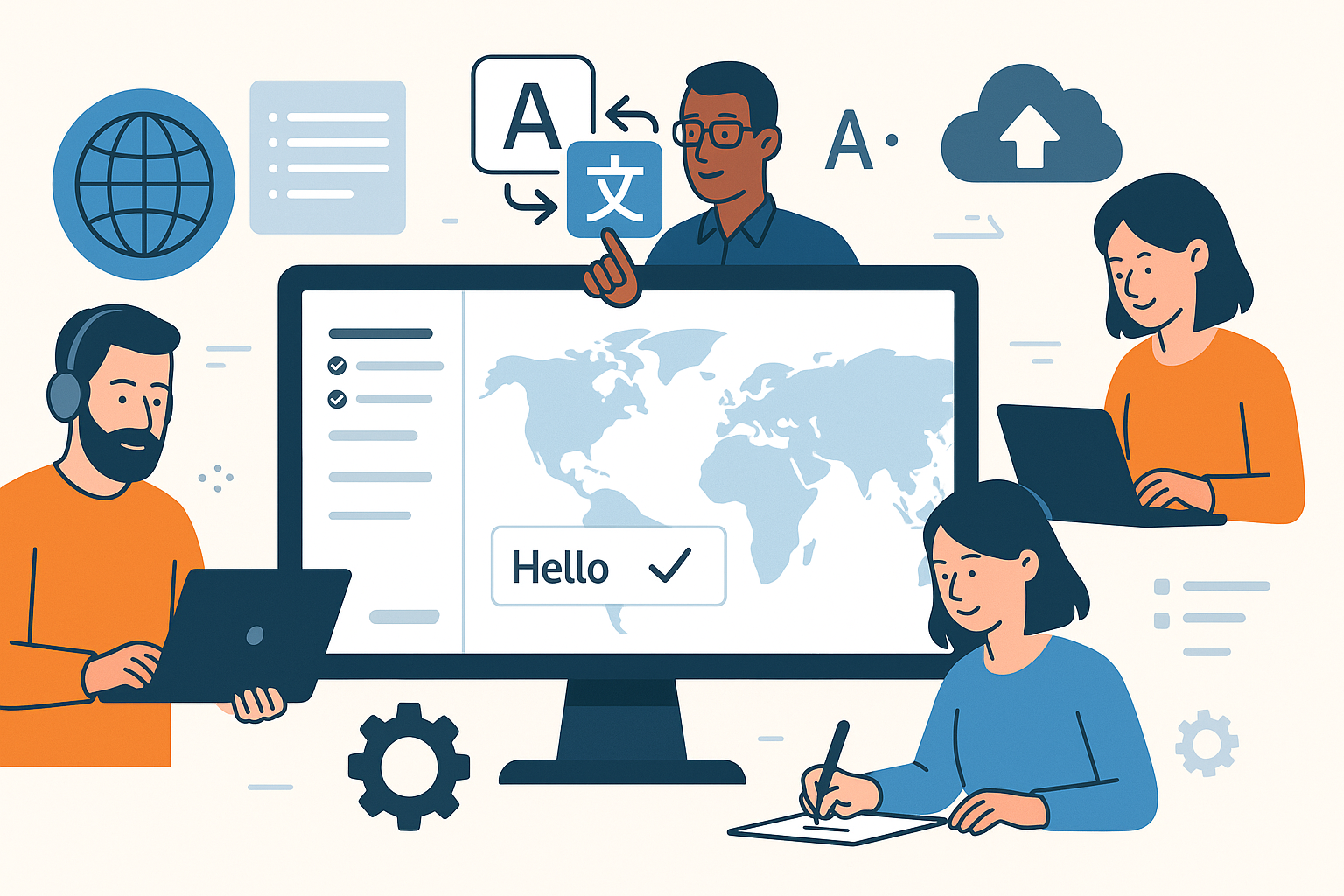As businesses expand globally and software becomes increasingly cloud-native and user-centric, the demand for seamless localization is higher than ever. In 2025, customers don’t just expect translated content – they expect a personalized experience that feels native. That’s where software localization services come in.
Effective localization is no longer a luxury – it’s a necessity. Whether you’re developing a SaaS platform, eCommerce website, or mobile app, using the right localization software can dramatically reduce time to market, improve user engagement, and enhance customer satisfaction.
What Are Localization Platforms?
Localization platforms are cloud-based tools designed to automate and manage the process of translating and adapting digital products into multiple languages.
Unlike traditional translation services, which often involve sending static files via email and working in spreadsheets, localization platforms provide dynamic, real-time collaboration environments for developers, translators, and project managers.
These platforms typically offer:
- String management: A centralized place to store, review, and edit translatable content.
- Translation memory: A database of previously translated strings to ensure consistency and reduce repetitive work.
- Machine translation integration: Auto-suggest or pre-fill translations using AI services like Google Translate, DeepL, or Amazon Translate.
- API and CLI support: Automate push/pull of content from your codebase.
- Glossaries and style guides: Help translators align with brand voice.
- In-context editing: See translations within the product interface.
The best localization platforms are designed to integrate with your CI/CD pipeline, ensuring that translations are always up-to-date – even in agile and DevOps environments.
How Does the Localization of Software Work?
Software localization is the process of adapting a product’s user interface, messages, and documentation for users in different locales. This process goes beyond word-for-word translation and includes cultural, technical, and legal adaptation.
Here’s a step-by-step breakdown of how it works in 2025:
1. Internationalization (i18n)
Before you even localize, the software must be internationalized – meaning the code is structured to support multiple languages (e.g., externalizing strings, avoiding hardcoded text, enabling RTL support, etc.).
2. Content Extraction
UI strings and content to be translated are extracted from source code or CMS into structured localization files (e.g., JSON, YAML, XLIFF).
3. Translation & Collaboration
Translators work in localization software, using tools like translation memory, machine translation, and real-time collaboration. Project managers assign roles, set deadlines, and track progress.
4. Contextual Preview
Top platforms offer real-time previews of translations within UI mockups, helping translators understand usage and avoid errors like truncation or gender mismatch.
5. Automated QA Checks
The platform checks for missing placeholders, length issues, and consistency violations – reducing costly bugs in production.
6. Deployment
Localized content is pushed back into the application using API or Git integration. Continuous localization means this happens automatically with every new feature or UI change.
7. Testing
Localized builds are tested for linguistic accuracy, layout issues, and cultural nuances, especially in languages with different grammar structures or script direction.
Localization isn’t just a step – it’s a loop. With continuous integration, new content gets translated and tested regularly as the product evolves.
5 Best Software Localization Services with Pros and Cons
1. Crowdin – Best for Developer-Focused Teams
Crowdin has evolved into a go-to localization software for teams practicing agile development. It offers a robust API, CLI, and Git integration, making it ideal for modern workflows where translation must keep pace with frequent product releases.
Key features:
- Over 40 file formats supported
- Real-time collaboration and context preview
- Crowdin In-Context for live website translation
- Integration with GitHub, GitLab, Bitbucket, Azure DevOps
Built-in task automation and translation memory
Pros:
- Extremely developer-friendly
- CLI tool for command-line integration
- Advanced branching and merge support
- Strong visual context support
- Easy onboarding for translators
Cons:
- Can be overwhelming for non-technical users initially
- Higher-tier plans required for enterprise-scale features
Crowdin strikes a perfect balance between powerful localization software and usability. Whether you’re a SaaS startup or an enterprise with multiple products, it’s a top-tier solution that scales.
2. Lokalise – Best for Speed and Ease of Use
Lokalise continues to shine in 2025 for its slick UI, user-friendliness, and integrations with design tools like Figma and Sketch. It’s built for teams who prioritize speed and visual clarity.
Key features:
- In-context editing via screenshots
- Automatic placeholder recognition
- Git-based workflow support
- Style guides and translation memory
- Role-based access and reviewer workflows
Pros:
- Intuitive and beginner-friendly
- Excellent Figma integration for design-localization handoff
- Built-in QA checks
- Fast project setup and a clean dashboard
Cons:
- Limited advanced automation features compared to Crowdin
- Enterprise features are locked behind higher pricing tiers
If your product team is sprint-based and visual design plays a major role in your development cycle, Lokalise is a fantastic choice.
3. Transifex – Best for Complex Projects
Transifex is a powerhouse localization platform built for organizations managing extensive multilingual content. It’s often used for localizing open-source software, mobile apps, and multimedia.
Key features:
- Multimedia and video localization
- Powerful API and CLI
- Team collaboration features
- Language fallback and pluralization handling
- Custom workflows
Pros:
- Suitable for large-scale projects
- Supports a broad range of content types
- Highly customizable workflows
- Great community for open-source projects
Cons:
- Interface can feel outdated
- Steeper learning curve for new users
For companies dealing with multiple platforms (web, mobile, docs, videos), Transifex is a proven and versatile solution.
4. Phrase – Best for Continuous Localization
Phrase (formerly PhraseApp) is popular among engineering teams for its support of continuous localization. It’s designed with automation in mind and fits seamlessly into modern DevOps pipelines.
Key features:
- Full CLI for string push/pull
- Git-based workflows
- Branching support
- Multi-repository handling
- Strong API support
Pros:
- Tailored for developers with CI/CD pipelines
- Quick Git integration
- Efficient version control
- Excellent documentation
Cons:
- Requires technical knowledge to unlock full potential
- Limited visual context tools compared to Lokalise
Phrase is best suited for agile teams that treat localization as code and want full automation from commit to release.
5. Smartling – Best for Enterprise Content and Branding
Smartling offers a unique combination of platform and services, providing access to a network of professional translators along with enterprise-grade tooling. It excels in maintaining brand consistency across high-volume content.
Key features:
- AI-assisted translation engine
- Brand tone enforcement
- Rich analytics and reporting
- Style guides and glossary enforcement
- Visual translation interface
Pros:
- Ideal for enterprises with a global brand strategy
- AI + human-in-the-loop model ensures quality
- End-to-end service management available
- White-glove onboarding and support
Cons:
- Pricey for smaller teams
- Not as developer-centric as other platforms
For multinational companies, Smartling offers both strategic localization guidance and execution at scale – making it ideal for marketing-driven teams and content-heavy websites.
Final Thoughts: Which Localization Software Should You Choose?
In 2025, software localization is no longer a linear task but a continuous process integrated into product development. Your choice of localization platform should align with your technical infrastructure, content velocity, team size, and quality expectations.
Here’s a quick summary:
| Platform | Best For | Strengths |
| Crowdin | Agile tech teams | Powerful CLI/API, collaboration |
| Lokalise | Design-led SaaS startups | Fast setup, Figma integration |
| Transifex | Content-heavy enterprise apps | Scalable, supports multimedia |
| Phrase | DevOps and continuous delivery | Git workflows, full automation |
| Smartling | Global enterprises, brand focus | Managed service, AI + human quality |
If you’re launching in multiple regions this year, Crowdin offers the flexibility, developer-friendliness, and scalability you need. For others, tools like Lokalise and Smartling may better align with your business model and team structure.
No matter your choice, investing in the right localization software will help ensure your users feel like your product was built just for them – no matter where they are in the world.


